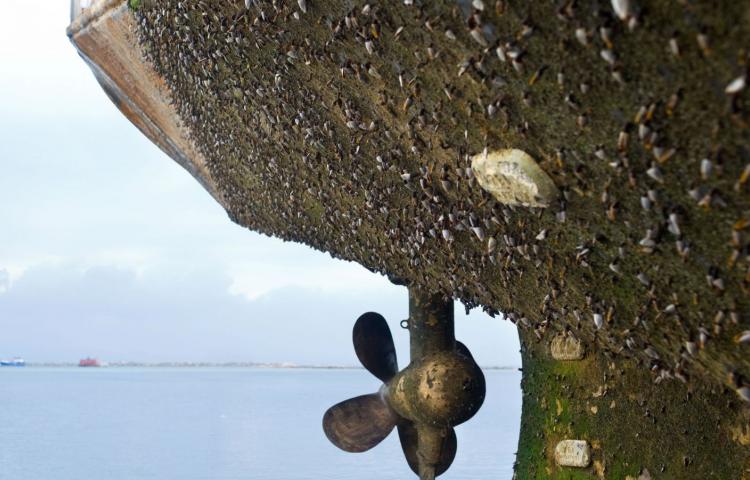
- Jan 26, 2022
- Théo Cartereau
- Underwater drone news
- 0 Comments
What is Biofouling ?
Biofouling is a biological process that immediately affects any surface immersed in sea water. Ship hulls attract different types of organisms, mainly barnacles, but also algae, bacteria and underwater weeds.

Over time, a thick layer of fouling can form on the ship’s hull, which greatly increases the friction against the water while it is sailing. This has major consequences for ship owners. Fouling occurs much more rapidly in warm and tropical waters.
Figures on ship biofouling
According to a white paper published by Swedish technology company I-Tech, “fouling idling,” has increased steadily since 2009, with a starting point of 25.4% and a peak of 35.0% in May 2020.
Given the growth in the fleet, this means that the absolute number of idling vessels in the global fleet has doubled between 2009 and 2020.

Did you know that this level of ship biofouling would be responsible for at least 110 million tons of excess carbon emissions per year?
Financial disaster of ship biofououling
With the advent of new regulations in the shipping industry, biofouling has come under intense scrutiny and operators are now being forced to re-examine their approach to the problem. In addition to the environmental problems caused by hull fouling, it is a real financial drain on the vessel operator. Indeed, to reach its cruising speed, a ship will have to consume much more fuel.

A VLCC theoretically consumes 65 tons of bunkers per day when it is in good condition. When it is dirty, it may need to use up to six additional tons per day. This equates to between $1,260 and $4,146 more per day.
Assuming 280 days at sea per year, that means an additional bill of between $352,800 and $1,160,880. Large container ships would face even higher bills because they tend to travel faster.
Decarbonizing a fleet
As the shipping industry still faces the IMO’s 2050 GHG reduction targets, the numbers in this article should serve as a reminder.
It should remind us that a clean hull is the first step in a fleet’s decarbonization strategy.
As the study by I-Tech and the Safinah Group shows, more than 40% of the ships surveyed had more than 10% ship biofouling coverage, responsible for at least 110 million tons of excess carbon emissions.
However, the best approach to achieving a clean hull is the subject of much debate among owners. Arguably, the best starting point is to take a preventative approach to antifouling and to be on constant alert.
And this is where Notilo Plus solutions come in, thanks to the Seasam ecosystem and the Notilo Cloud data analysis platform. Analyzing the degree of biofouling on a ship’s hull is simplified with the Seasam ROV and its accessories. Using Notilo Cloud, it is possible to monitor the condition of the hulls of vessels throughout a fleet using its intuitive and purpose-built interface.
But as a picture is worth a thousand words, discover the power of our ecosystem in this short video instead:


